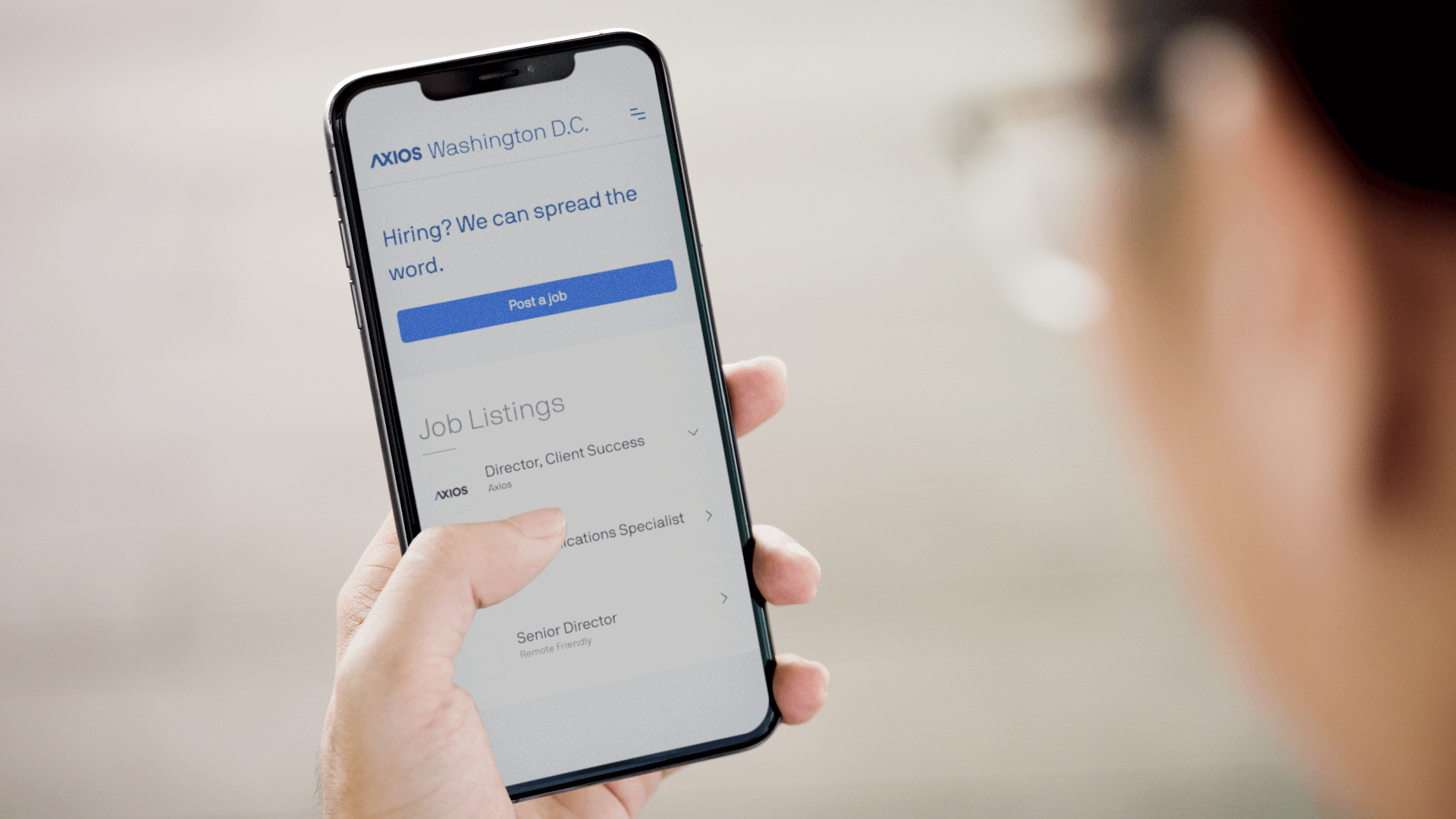| | | | | | | | | | | Axios What's Next | | By Alex Fitzpatrick, Joann Muller and Jennifer A. Kingson · Aug 04, 2022 | | Dismayed by Instagram's recent changes, artists are seeking out alternative platforms to connect with one another and find new audiences, Alex reports today. - Join Axios in partnership with URL Media today at 12:30 p.m. ET for the second event in our Hard Truths series exploring the challenges of bridging the racial homeownership gap. Guests include HUD Secretary Marcia L. Fudge, New Orleans Mayor LaToya Cantrell and National Fair Housing Alliance president and CEO Lisa Rice. Register here.
Today's Smart Brevity count: 1,080 words ... 4 minutes. | | | | | | 1 big thing: The rise of alt-Instagrams |  | | | Illustration: Aïda Amer/Axios | | | | Photographers, designers and other creative types turned off by Instagram's pivot to TikTok-like features are tentatively moving to alternative platforms, Alex Fitzpatrick reports. Why it matters: Instagram has long been a digital gallery space for artists of all kinds, helping them find an audience, connect with other creatives and land paid gigs. - But the Meta-owned platform's gradual evolution into an ad- and shopping-heavy app that favors short-form video and algorithmically selected content has left the future of digital art-sharing in flux.
The context: Instagram has been de-emphasizing still imagery for years. But more recent changes, such as a focus on shopping and a big increase in the amount of suggested content that appears in users' feeds, has forced a reckoning. A handful of rival apps and platforms are reporting spikes in user activity. - They include relatively new upstarts, like Glass (for photographers of all kinds) and Grainery (for film photographers, specifically).
- Even old favorites like Flickr — a pioneer in digital photography-sharing that owned the loyalty of serious photographers in the mid-2000s — are seeing a boost, and some creatives are turning back to Tumblr, another longtime artist haven.
- Others are also experimenting with e-newsletters.
What they're saying: "We started working on Glass ... because we felt like the photo community that existed on Instagram that built the back of Instagram doesn't exist anymore," says Glass head of community and marketing Daniel Agee. - Agee says that Instagram's ad- and sales-supported model have made it a crummy place for artists trying to share their work.
- By contrast, Glass is subscription-based, at $4.99/month.
Yes, but: None of these services is likely to rack up anywhere close to Instagram's billion-plus users. Glass's user base, for example, is in the mid-five-digit range. - Choosing a strategy that doesn't depend on mega-scale can make long-term sense — smaller online groups built around specific interests (like some small subreddits) tend to be healthier environments than huge free-for-all networks (like Twitter).
- But scale helps creatives seeking to build reputations and sell stuff. Some will end up embracing video, and many will simply get used to Instagram's changes.
The big picture: This is all part and parcel of the long-standing tension between creators and platforms. Creators have relied on apps like Instagram and YouTube to reach their audiences — leaving them exposed to the whims of the platforms and the kinds of content they prioritize. Share this story. |     | | | | | | 2. Tutors on demand |  | | | Illustration: Annelise Capossela/Axios | | | | Online learning platform Varsity Tutors today launched what it calls a first-of-its-kind subscription bundle offering one-on-one tutoring, live classes, self-study programs and more, Alex reports. - The program, called "Learning Memberships," starts at $249/month.
Why it matters: Kids across the country are woefully behind after years of COVID-related education disruptions, and parents are eager for anything that might help them catch up. Details: The bundle's centerpiece is Varsity's tutoring program, which takes users' needs and aptitudes into account to match them with a suitable aide across thousands of subjects. Yes, but: Some of the kids most in need of extra help right now are also those whose families are least able to afford or access a paid online tutoring platform. - Plus, online schooling's failure to replicate the real-deal experience is part of why many kids are behind.
Varsity offers a wealth of free content, says Chuck Cohn, founder and CEO of Varsity parent company Nerdy, and is working with schools with lots of low-income students. - Users are "engaging typically for an hour at a time, 90 minutes at a time, in addition to their normal interactions in school," he adds. "And so all that social-emotional learning that naturally occurs in schools, which we believe is incredibly important, is already occurring."
Of note: Demand for tutoring and catch-up services like this one is through the roof right now — but they can't entirely make up for the systemic problems continuing to plague public schools, like teacher shortages. Share this story. |     | | | | | | 3. GM is going hands-free on way more roads |  | | | Photo courtesy GM | | | | General Motors' hands-free driving tech will soon work on many more North American roadways, Joann Muller reports. Why it matters: As cars come equipped with ever more capable assisted-driving systems, consumers will have the chance to try out — and potentially learn to trust — vehicle automation. The latest: Starting later this year, GM's hands-free driving system, Super Cruise, will be available on 400,000 miles of roads in the U.S. and Canada, the company says. That's double its current operating area, and more than triple the coverage for Ford's similar BlueCruise feature. - Super Cruise, which debuted in 2017 on the Cadillac CT6, will be available on 22 models by the end of 2023.
How it works: When engaged, Super Cruise allows drivers to keep their hands in their lap and their feet off the pedals. - The system controls acceleration and braking to maintain the desired gap from the vehicle ahead, and steers to stay within the lane markings.
What they're saying: In a blog post shared in advance with Axios, GM President Mark Reuss stressed the company's safety culture as it rolls out more advanced autonomy. - "Because safety is our focus, we're investing significant time and resources to help ensure our features work safely before we go to market with these technologies," he writes.
What to watch: GM says it is on track to deliver the first autonomous vehicle for personal use "by mid-decade." Read the rest. |     | | | | | | A message from Axios | | Win the race for (remote) talent | | |  | | | | Reach over 1 million smart professionals in the fastest growing cities in America. Axios has job boards to get your openings in front of qualified candidates. Use code AUGUST50 for $50 off. | | | | | | 4. Spending on stuff is out, spending on experiences is in |  Data: Marriott; Table: Simran Parwani/Axios The latest financial numbers from the world's largest hotel companies suggest a big shift in consumers' spending and travel habits compared to the height of the pandemic, Axios' Nathan Bomey reports. Driving the news: Marriott International posted a 70% year-over-year increase in second-quarter revenue, to $5.34 billion, as people grew more comfortable traveling. What they're saying: During Marriott's earnings call, CEO Anthony Capuano pointed to pent-up demand and "the shift of spending towards experiences versus goods" as drivers of the company's surging finances. The bottom line: What we're not spending on stuff, we're spending on fun. Share this story. |     | | | | | | 5. Meet your next ride (it's a golf cart) |  | | | A golf cart in Hong Kong. Photo: Justin Chin/Bloomberg via Getty Images | | | | Golf carts are apparently the hot new way to get around downtown Tampa, the Tampa Bay Times reports. Details: "Channelside Golf Cart Rentals opened recently at the edge of downtown's fast-developing Water Street Tampa district," per the paper. - "The modest fleet of eight four-passenger gas-powered carts ... are street legal with the required lights, turn signals and other equipment. They can be driven on roads with a speed limit of 35 mph or lower."
Alex's thought bubble: Beep beep! We just need to electrify these things, and they're as solid an option as any for downtown driving. |     | | | | | | A message from Axios | | Win the race for (remote) talent | | |  | | | | Reach over 1 million smart professionals in the fastest growing cities in America. Axios has job boards to get your openings in front of qualified candidates. Use code AUGUST50 for $50 off. | | | | A hearty thanks to What's Next copy editor Amy Stern. Was this email forwarded to you? Get your daily dose of What's Next magic by signing up here for our free newsletter. |  | | Are you a fan of this email format? It's called Smart Brevity®. Over 300 orgs use it — in a tool called Axios HQ — to drive productivity with clearer workplace communications. | | | | | | Axios thanks our partners for supporting our newsletters. If you're interested in advertising, learn more here.
Sponsorship has no influence on editorial content. Axios, 3100 Clarendon Blvd, Arlington VA 22201 | | | You received this email because you signed up for newsletters from Axios.
Change your preferences or unsubscribe here. | | | Was this email forwarded to you?
Sign up now to get Axios in your inbox. | | | | Follow Axios on social media:    | | | | | |










No comments:
Post a Comment